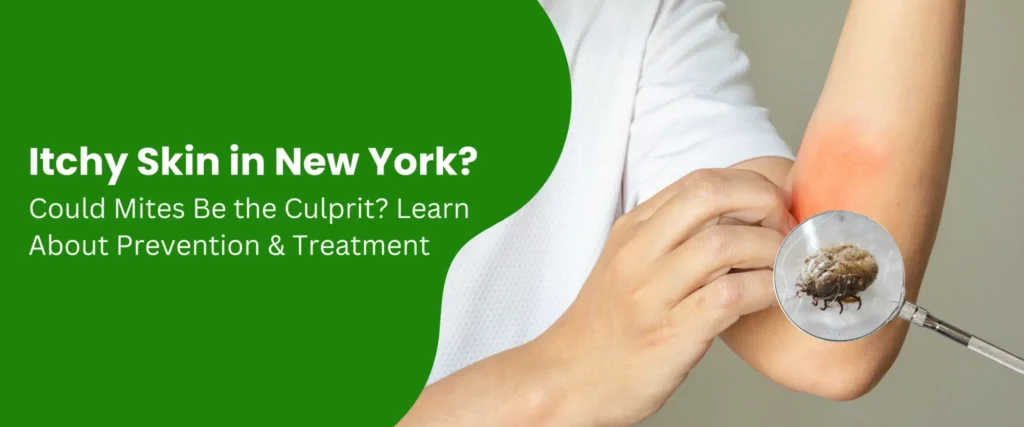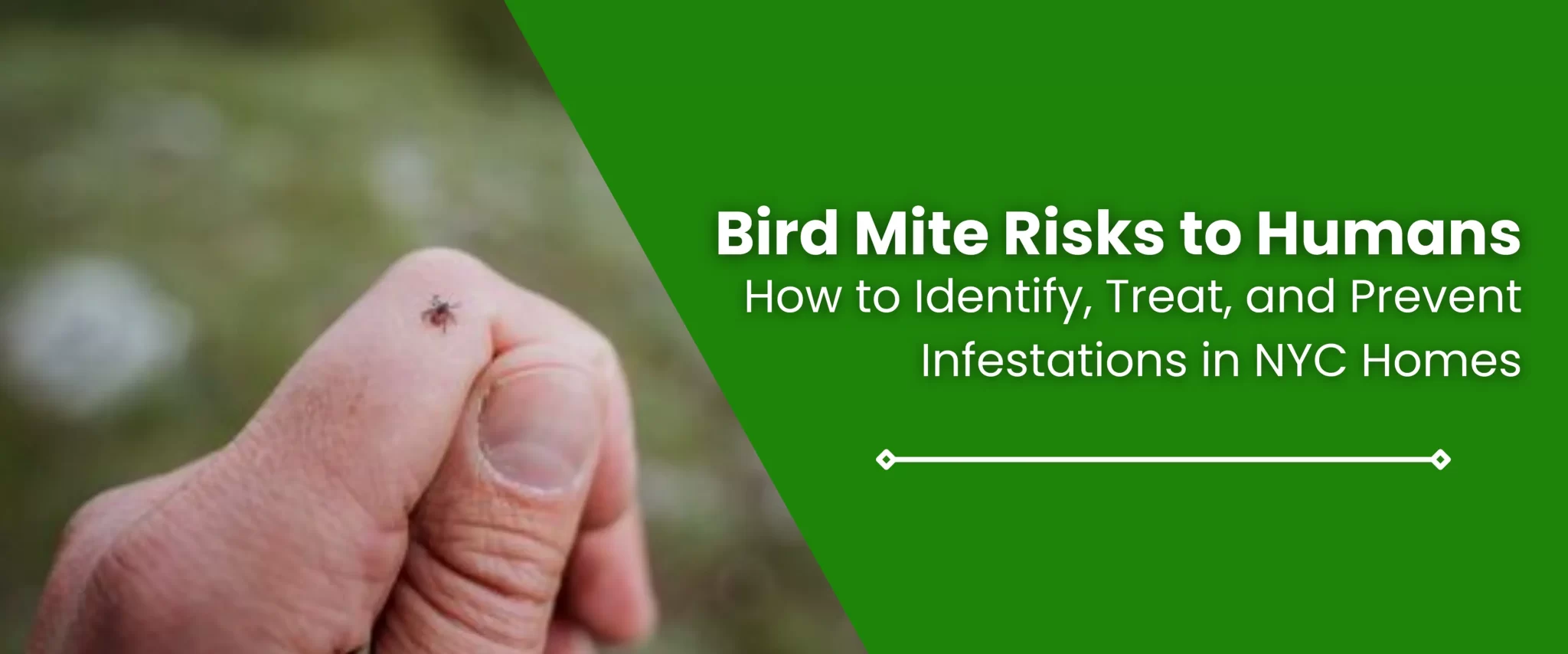
Bird Mite Risks to Humans: How to Identify, Treat, and Prevent Infestations in NYC Homes
In the bustling metropolis of New York City, where towering skyscrapers and dense population create a unique urban environment, a lesser-known yet significant threat lurks within homes: bird mites. These tiny, parasitic insects, often associated with birds, can infest human dwellings, causing discomfort, skin irritation, and potential health risks.
Bird mites, belonging to the Dermanyssidae family, are parasitic insects that primarily infest birds. These minuscule creatures, typically measuring less than 0.5 millimeters in length, feed on the blood of their avian hosts. While they are typically found in bird nests and roosting sites, they can also migrate indoors, especially during periods of heavy bird activity or when their preferred habitats are disturbed.
Bird Mite Risks to Humans
Health Risks
Bird mite infestations can pose significant health risks to humans, particularly those with sensitive skin or allergies. Common health issues associated with these pests include:
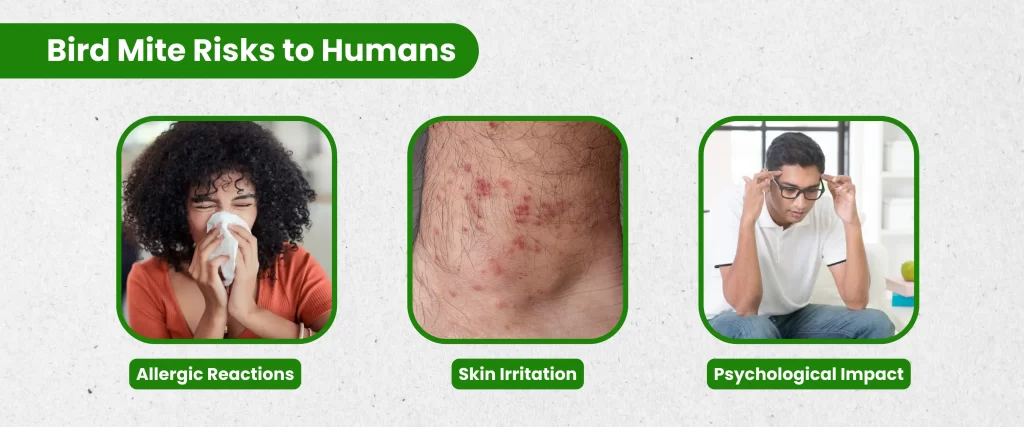
- Allergic Reactions: Individuals with allergies to mites may experience allergic rhinitis, characterized by symptoms such as sneezing, runny nose, itchy eyes, and congestion. In severe cases, exposure to bird mites can trigger asthma attacks or other respiratory problems.
- Skin Irritation: Bites from bird mites can cause intense itching, redness, and skin rashes. Scratching can lead to secondary infections, further aggravating the discomfort.
- Psychological Impact: Living in a home infested with bird mites can be distressing and emotionally taxing. The constant presence of these pests can lead to anxiety, stress, and a sense of unease.
Mite Behavior
Bird mites are primarily nocturnal, feeding on their avian hosts during the night. However, when their bird populations decline or their habitats are disturbed, they may seek alternative sources of blood, including humans. These mites typically bite at night, often around the face, neck, and upper body.
Urban Challenges in NYC
The densely populated urban environment of New York City presents unique challenges for dealing with bird mite infestations. Several factors contribute to the increased risk of infestations in metropolitan areas:

- High Bird Populations: NYC is home to a diverse range of bird species i.e pigeons, many of which find suitable nesting and roosting sites in the city’s buildings and parks. These high bird populations increase the likelihood of mite infestations.
- Rooftop Nests: Many buildings in NYC have rooftop features that provide ideal nesting sites for birds, such as ledges, ventilation shafts, and satellite dishes. These nests can harbor large populations of bird mites.
- Apartment Building Structures: The close proximity of apartments in NYC buildings can facilitate the spread of mites from one unit to another, making it difficult to contain infestations.
How to Identify Bird Mites
Recognizing the signs of a bird mite infestation is crucial for taking timely action. Here are some key indicators for bird mite identification:
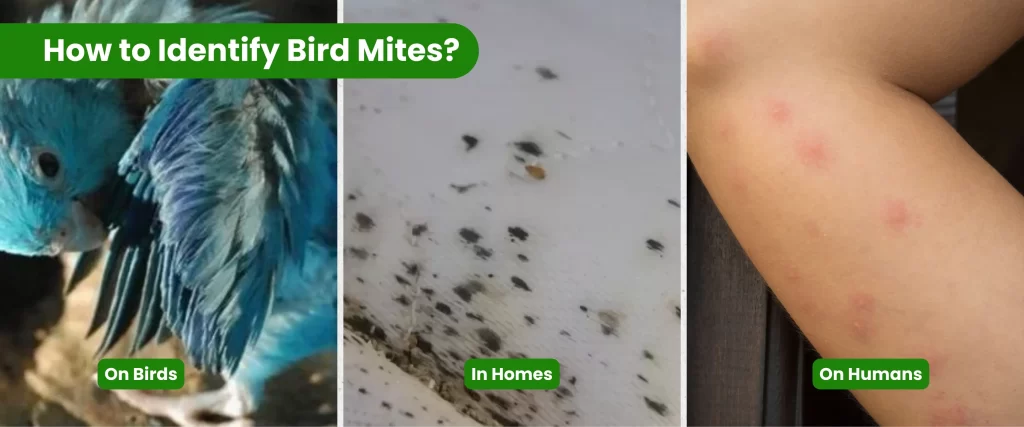
- On Birds: Look for signs of distress, restlessness, and excessive scratching in birds. Examine their feathers for small, reddish-brown mites.
- In Homes: Pay attention to tiny, reddish-brown specks on bedding, furniture, and walls. You may also notice small, dark spots on light-colored surfaces.
- On Humans: Look for small, red bumps on your skin, often accompanied by intense itching. These bites are typically found on exposed areas such as the face, neck, and arms.
Tiny Black Bugs in House
If you’re noticing tiny black bugs in your home, it’s important to accurately identify them to determine the appropriate course of action. While bird mites can appear black under certain conditions, other small insects, such as fleas, carpet beetles, or booklice, may also be present.
To differentiate bird mites from other tiny black bugs, consider the following characteristics:
- Size and Shape: Bird mites are typically smaller than other common household pests and have a more rounded shape.
- Behavior: Bird mites are often found in areas with bird activity or near potential nesting sites, such as attics, eaves, or chimneys.
- Bite Marks: If you’re experiencing bites, look for the characteristic red bumps associated with bird mites.
Treating Bird Mites on Birds
How to Get Rid of Bird Mites on Birds
If you have birds in your home or garden and suspect a mite infestation, it’s important to take prompt action to protect your feathered friends. Here’s a step-by-step guide on treatment and prevention:
- Isolate Infected Birds: Separate the infected birds from healthy ones to prevent the spread of mites.
- Clean the Aviary or Cage: Thoroughly clean and disinfect the aviary or cage, including perches, feeders, and water dishes. Use a mild detergent solution and a disinfectant approved for use on birds.
- Treat the Birds: Consult with a veterinarian to determine the most appropriate treatment for your birds. They may recommend specific medications or natural remedies to eliminate mites.
- Prevent Future Infestations: Regularly clean and disinfect the aviary or cage to prevent mite re-infestation. Monitor your birds for signs of mites and take prompt action if necessary.
Chicken Lice Treatment vs. Bird Mite Treatment
While chicken lice and bird mites are both parasitic insects, there are some key differences in their treatment:
- Host Specificity: Chicken lice are specifically adapted to infest chickens, while bird mites can infest a variety of bird species.
- Treatment Options: The treatments available for chicken lice and bird mites may differ, depending on the specific type of parasite and the affected bird species.
- Prevention Strategies: Prevention strategies for chicken lice and bird mites may also vary, such as the use of specific poultry medications or the implementation of hygienic practices in the coop.
Diatomaceous Earth as a Solution
Diatomaceous earth is a natural substance made up of fossilized diatoms, microscopic aquatic organisms. It can be an effective tool for controlling mites, including bird mites.
Here’s how diatomaceous earth works:
- Dehydration: Diatomaceous earth is made up of tiny, sharp particles that can puncture the exoskeletons of insects, leading to dehydration and death.
- Safe for Birds: When used properly, diatomaceous earth is generally safe for birds. However, it’s important to choose a food-grade product and follow the manufacturer’s instructions.
Bird Mite Infestations in Homes
How to Get Rid of Bird Mites in House
If you’ve discovered a bird mite infestation in your home, here are some practical tips for removing these pests:
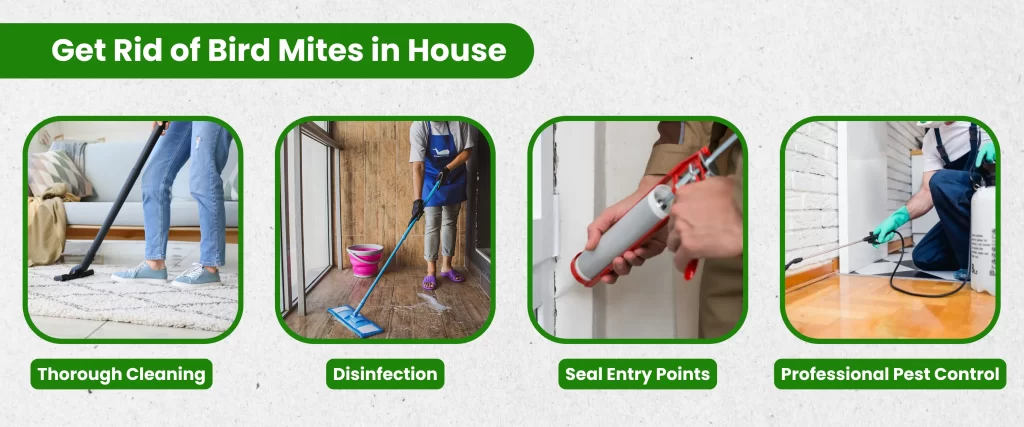
- Thorough Cleaning: Vacuum all carpets, rugs, and upholstery to remove mites and their eggs. Wash bedding, curtains, and other fabrics in hot water.
- Disinfection: Clean and disinfect surfaces with a mild detergent solution and a disinfectant approved for use on household surfaces. Pay particular attention to areas where birds may have roosted or nested.
- Seal Entry Points: Inspect your home for any cracks or gaps that could allow birds to enter. Seal these openings to prevent future infestations.
- Professional Pest Control: In severe infestations or if the problem persists, consider contacting a professional pest control company for assistance.
What Temperature Kills Bird Mites
Heat treatments can be an effective way to eliminate bird mites, as these pests are sensitive to high temperatures. Here’s what you need to know:
- Temperature Requirements: To kill bird mites, temperatures must reach at least 120°F (49°C) for a sustained period.
- Heat Treatment Methods: There are several methods for heating a home to the required temperature, including using space heaters, portable heaters, or professional heat treatment services.
- Considerations: Before attempting a heat treatment, ensure that all sensitive items, such as electronics and artwork, are removed from the affected area. Consult with a professional pest control company for guidance on the best approach for your home.
Preventing Bird Mite Infestations in NYC Homes
To prevent bird mite infestations in your NYC home, consider the following strategies:
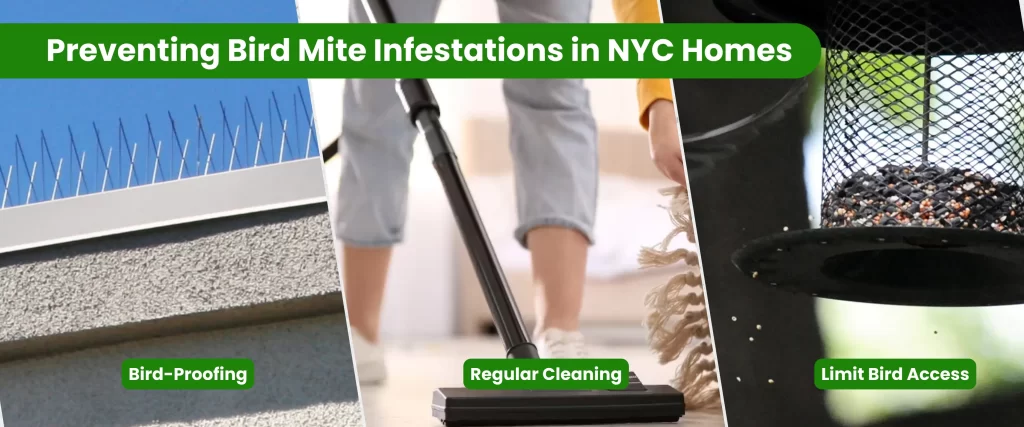
- Bird-Proofing: Seal any cracks or gaps in your home’s exterior to prevent birds from entering. Install bird netting or spikes on ledges and other areas where birds may attempt to nest.
- Regular Cleaning: Keep your home clean and clutter-free, as clutter can provide hiding places for mites. Vacuum regularly and wash bedding, curtains, and other fabrics in hot water.
- Limit Bird Access: Avoid feeding birds near your home, as this can attract them to your property. If you have bird feeders, place them a distance away from your home.
Urban-Specific Prevention Tips
NYC residents face unique challenges when it comes to preventing bird mite infestations. Here are some additional tips:
- Rooftop Maintenance: If your building has a rooftop, inspect it regularly for signs of bird nests or roosting areas. Remove any nests and take steps to deter birds from nesting on your roof.
- Ventilation Screens: Install fine-mesh screens over ventilation openings to prevent birds from entering your home.
- Window Screens: Ensure that your windows have tight-fitting screens to keep birds out.
Comparison with Other Common Household Pests
Dust Mites vs Bed Bugs vs Bird Mites
While these three pests can all cause discomfort and health problems, they have distinct characteristics and behaviors:
| Feature | Dust Mites | Bed Bugs | Bird Mites |
| Habitat | Carpets, bedding, furniture | Bedding, furniture, mattresses | Bird nests, roosting sites, occasionally human dwellings |
| Size | Microscopic | Small, reddish-brown | Microscopic |
| Feeding Habits | Dead skin cells | Human blood | Bird blood, occasionally human blood |
| Bites | Typically do not bite | Red, itchy bites in a linear pattern | Red, itchy bites |
| Health Risks | Allergies, asthma | Itching, skin irritation, insomnia | Allergies, skin irritation, psychological distress |
It’s important to accurately identify the type of pest you’re dealing with to choose the appropriate treatment and prevention methods. If you’re unsure, consulting with a pest control professional can be helpful.
Conclusion
Bird mite infestations in NYC homes can pose significant health risks, including allergic reactions, skin irritation, and psychological distress. These pests are particularly prevalent in urban environments due to high bird populations and suitable nesting sites. By understanding the nature of bird mites, identifying signs of infestation, and implementing effective treatment and prevention strategies, NYC residents can protect their health and homes from these unwelcome invaders.
Call to Action
Taking proactive steps to prevent bird mite infestations is crucial for maintaining a healthy and comfortable living environment. By bird-proofing your home, practicing good hygiene, and addressing any signs of infestation promptly, you can significantly reduce the risk of encountering these pests.
If you suspect a bird mite infestation in your home, don’t hesitate to contact a Best@Pest Exterminating for assistance. Feel free to call on 718-284-7378, 718-284-7379 or visit website: https://bestatpestnyc.com/ to book an inspection. Our Experts can accurately identify the problem and provide effective solutions tailored to your specific situation.

